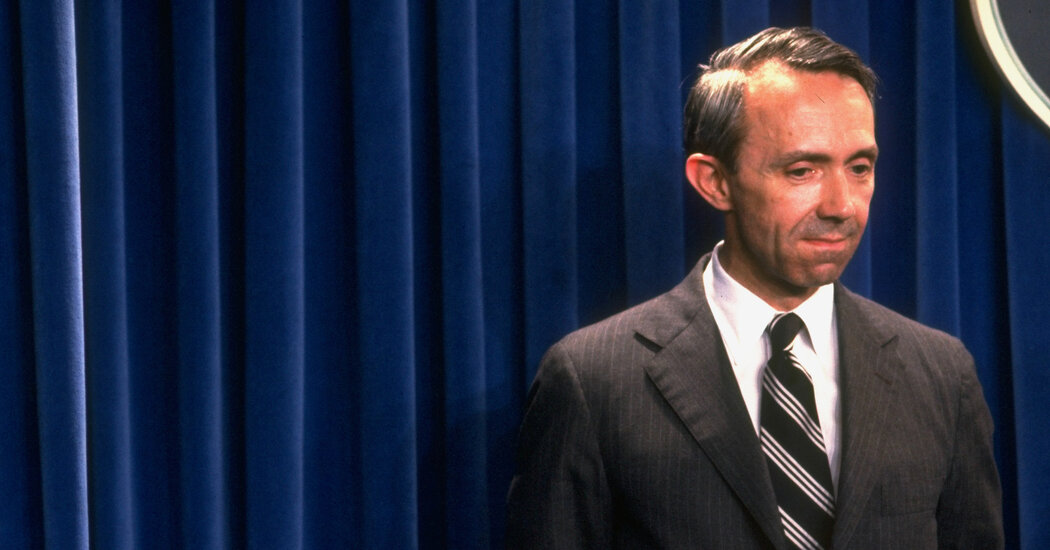Supreme Court justices are famous but not well known. Their names are familiar but not their faces. For this reason, David Souter and Stephen Breyer were frequently mistaken for each other. Once during his tenure on the court, Souter was driving from Washington to his home in New Hampshire, and he stopped in a little restaurant to get something to eat. A couple came up to him, and the man asked him a question.
“You’re on the Supreme Court, right?” Souter nodded. “You’re Stephen Breyer, right?”
Souter didn’t want to embarrass the fellow in front of his wife, so he said yes, he was Breyer. They chatted for a little while, and the fellow asked, “Justice Breyer, what’s the best thing about being on the Supreme Court?”
After a pause, the justice answered, “I’d have to say it was the privilege of serving with David Souter.”
Souter, who died Friday at 85, was always among the more obscure members of the court, and few knew of his laconic good humor. His biography was often shortened to a handful of facts. New Englander. Bachelor (despite the ardent efforts of Sandra Day O’Connor and Ruth Bader Ginsburg to fix him up over the years). Republican appointee but disappointment to conservatives. He hated Washington, D.C., and retired at just 69 years old in 2009, turning his seat over to President Barack Obama, who replaced him with Sonia Sotomayor.
But there was a lot more to Souter than these snippets suggest. At a moment when the Supreme Court, like the country as a whole, is locked into opposing partisan camps, he was an unapologetic learner. In his first term on the court, in 1991, he was a doctrinaire conservative, even voting with the majority to uphold the so-called gag rule, which limited medical workers at federally funded facilities from discussing abortion with patients.
But in the summer after that first term, he told his colleague Harry Blackmun in a letter that he needed to return to New Hampshire to be alone. “I have wanted as much as possible to be alone to come to terms in my own heart with what has been happening to me,” he wrote.
What happened is that Souter turned into a humane and distinguished justice, who had a greater scope of vision than his background suggested. He was proudly old-fashioned. He was given a television but never plugged it in. He wrote with a fountain pen. He didn’t like electric light. (He moved his office chair around his chambers to catch the sunlight through the windows.)
Yet it was Souter, of all people, who wrote the court’s widely heralded opinion defending the right of the rap group 2 Live Crew to engage in parody and sampling of original music without violating the Copyright Act. He had the breadth of vision to see what was at stake, and that applied to much more than music. Along with O’Connor and Anthony Kennedy, Souter engineered the compromise that preserved the right to abortion in the Casey decision of 1992. He dissented in Bush v. Gore. He voted to guarantee the right to due process of the prisoners in Guantánamo.
There was a time when moderate or even liberal Republicans like Souter held great sway on the court. There was John Marshall Harlan II in the 1950s, Potter Stewart in the ’60s and, in later years, Lewis Powell and John Paul Stevens, along with Blackmun, O’Connor and Kennedy, as well as Souter. That kind of moderate is gone now — gone from the Supreme Court and, it appears, the surface of the earth. Sadly, Souter’s wise jurisprudence disappeared long before the man himself left us.


